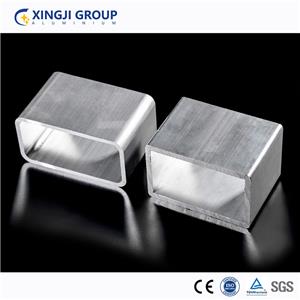What is Types of aluminum surface treatment
There are many reasons to choose an aluminum profile for a project. Aluminum is versatile and relatively inexpensive. It has a high strength-to-weight ratio and corrosion resistance. It is environmentally friendly and can accept high performance coatings.

The choice of finish is important for two main reasons:
Reason one, Surface treatment can improve corrosion resistance.
Aluminum has a natural oxide film that prevents corrosion. This oxide film is sufficient for many applications. In some environments, however, additional protection may be required.
The second reason is that surface treatment can enhance the appearance of aluminum.
Depending on the effect you want to achieve, you need to choose the right finish. Maybe you want something brightly colored. Maybe you want to achieve a "mirror" effect. You need to choose a finish that will give you the look you want.
Here are 6 different types of aluminum profile finishes:
l Mechanical finish
Aluminum can be polished, sandblasted, brushed, ground or sanded. These finishes can improve surface quality or prepare for other finishes.
l Preprocessing
Aluminium can be etched or cleaned with alkaline or acidic materials. A pretreatment coating is then applied. The coating enhances powder or paint adhesion and provides corrosion resistance.
l Bright impregnation
The extrusions can be bright impregnated to give the aluminium a mirror finish. To do this, technicians place the profiles in a special immersion solution (a mixture of hot phosphoric acid and nitric acid). After bright dipping, the profiles can also be anodized to thicken the corrosion-resistant oxide layer of the metal.
l Anodizing
In addition to the natural oxide film, this electrochemical process provides additional protection. Forms a durable porous anodized layer on aluminum surfaces. Anodized aluminum also accepts bright colors. Anodized aluminum or its alloys improve its surface hardness and wear resistance.
l Spray paint
Spray paint is the use of compressed air to disperse liquid paint (commonly known as paint) into paint mist particles and adhere to the surface of the profile. These paints have a variety of colors, and liquid paints usually contain volatile organic compounds (VOCs). They are removed during curing or baking. When the volatile organic compounds disappeared, a large amount of solids formed a thin film on the profile.
l Powder Coating
Powder spraying is to spray powder coating on the surface of the workpiece with powder spraying equipment (electrostatic spraying machine). Under the action of static electricity, the powder will be uniformly adsorbed on the surface of the workpiece to form a powder coating; Bake leveling cures and turns into a coating with various effects (different kinds of effects for powder coatings). At the same time, powder coating does not contain volatile organic compounds.
l Thermal transfer
Have you ever seen an aluminum extrusion that looks like wood? After applying a powder base coat, the profiles can be thermally transferred. Technicians wrap the profile in a patterned film. The thermal transfer process transfers the pattern directly to the extruded profile.
Whether you are designing a new building or the interior of a carriage, aluminum profiles are an important part of your project. Choosing the right finish will ensure your extruded profiles have the correct appearance and proper corrosion resistance. Curma Building Material Company will always help you to achieve your dream .So do not hesitate to contact us for more .---Curmawins





